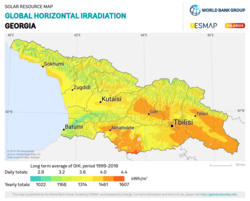Georgian surnames are an integral part of the country’s cultural and linguistic heritage. They are traditionally formed according to regional customs and linguistic patterns, and their distribution reflects Georgia's complex ethnic and historical geography. Contrary to some popular beliefs, there is no separate category of "Jewish" or "non-Georgian" surnames within Georgian surname structure -- while people of different origins may bear Georgian surnames, the naming conventions themselves are native to the region.
The emergence of hereditary surnames in Georgia dates back to at least the 12th century, when the term gvari (surname) appears in historical sources. Initially, surnames were primarily a privilege of the nobility. Names like Jakeli (lords of the Jaki castle) and Gabellidze reflect this early aristocratic usage.
By the 15th century, the use of surnames began to spread beyond the aristocracy. Records from the 16th century show widespread use of family names among peasants in regions such as Abkhazia. This early adoption predates similar developments in much of Europe, where surnames only became widespread in the 19th century.[1]
Types of Georgian surnamesTypes of Georgian surnames

Georgian surnames are often categorized by the region of origin, with different suffixes indicating geographic and ethnic roots:
- -shvili (“child of”): Common in eastern Georgia, especially in Kartli and Kakheti. One of the earliest examples is Palavandishvili (15th century).
- -dze (“son of”): Predominant in western Georgia, especially in Imereti. Often considered among the earliest Georgian surname forms.
- -iani / -ani: Typical of the Svan people from the mountainous Svaneti region (e.g., Ioseliani, Kitovani, Margveliani).
- -ia / -ava: Found among the Mingrelians of western Georgia (e.g., Kobalia, Jordania, Gamsakhurdia). These surnames are often based directly on names or descriptive words.
- -ushi: Rare suffix linked to the Laz ethnic group; historically part of ancient Colchian naming conventions (e.g., Tugushi).
- -uri: Common among the Khevsurs in the Caucasus mountains (e.g., Ketelauri, Zviadauri).
This division originated in ancient times, when the Georgian state was split into two distinct regions: Colchis in the west and Iberia in the east. Indigenous populations in western and central regions such as Imereti, Guria, and Adjara typically bear surnames with the suffix -dze, meaning "son." In eastern regions such as Kakheti and Kartli, surnames more often end in -shvili, meaning "child."
Among Mingrelians, who also reside in western Georgia (primarily in the region of Samegrelo), surnames commonly end in -ia or -ua.
Although Georgian surnames appeared much earlier than Russian ones, the majority of surnames spread during the period of feudal fragmentation. The political, cultural, and economic differences between various principalities led to the development of diverse linguistic forms and surname structures.
The earliest documented references to Georgian surname meanings and origins date to the 7th–8th centuries. At different stages of societal development, Georgian surnames reflected various factors, particularly patronymics, professions, geographical origins, and social status. Examples include Zukhba and Amilakhvari. From the 17th century, surnames often derived from place names (e.g., Surameli), and occasionally from Muslim names, such as Narimanidze and Japaridze.[2]
Distribution and migration of Georgian surnamesDistribution and migration of Georgian surnames

Maps of surname frequency reveal clear regional zones:
Svan surnames dominate the highlands in the northwest.
Mingrelian and Laz surnames appear in the western lowlands.
Armenian and Azerbaijani surnames are present in border regions and minority enclaves.
The distribution of -shvili and -dze surnames forms distinctive clusters even within cities like Tbilisi, where the eastern districts (e.g., Isani) are dominated by -shvili surnames and the western districts (e.g., Saburtalo) by -dze surnames.
Interestingly, some noble clans transitioned between forms: the Shaburidze clan of the 12th century became Shaburishvili by the 15th century.
The rise of -shvili surnames in eastern Georgia, particularly in the Kiziki region of Kakheti, may reflect historical shifts in social organization or migration. The suffix gradually expanded westward but did not fully penetrate regions like Adjara, due to geographic and political barriers such as the Ottoman border.
Within Tbilisi, divisions are also visible: eastern neighborhoods like Isani, Varketili, and Lilo are mostly populated by families with -shvili surnames, while western areas such as Saburtalo and Dighomi have a majority of -dze surnames.
Origins from nicknamesOrigins from nicknames
Many Georgian surnames derive not from personal names, but from nicknames or characteristics:
- Svanidze: Not necessarily descendants of Svans, but of someone nicknamed "Svan."
- Lekiashvili: Literally "child of a Lezgin," possibly referring to an ancestor with connections to the Lezgin people.
- Khachapuridze: Likely comes from a nickname based on a love for the traditional pastry khachapuri, rather than literal descent from it.
Such surname formation aligns with broader ethnographic trends in surname evolution across cultures.
Most common Georgian surnames:Most common Georgian surnames:
Celebrities with Gerogian surnamesCelebrities with Gerogian surnames

- Otar Ioseliani - Georgian film director
- Josef Dzhugashvili -better known as Stalin, General Secretary Of The Communist Party Of The Soviet Union
- Sofiko Chiaureli - Soviet actress
- Tengiz Abuladze - film director
- Niko Pirosmani - Georgian painter
- Revaz Gabriadze - Georgian theatre and film director, playwright, writer, painter, and sculptor
See alsoSee also
Explore moreExplore more
- Ethnicity map of Gerogia at MyHeritage
- How to Find Your Heritage by Last Name In 5 Steps at MyHeritage Blog

